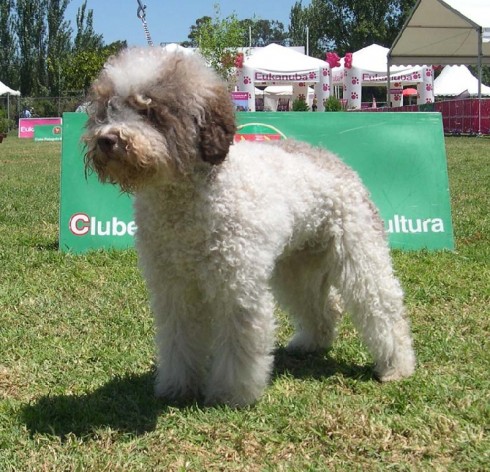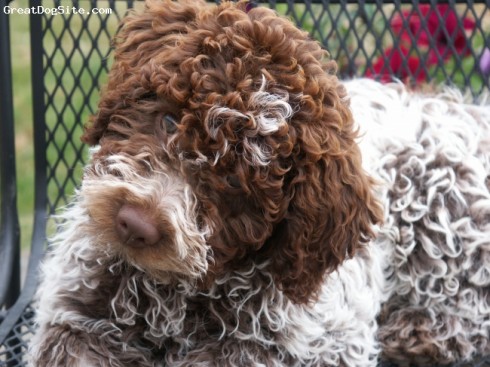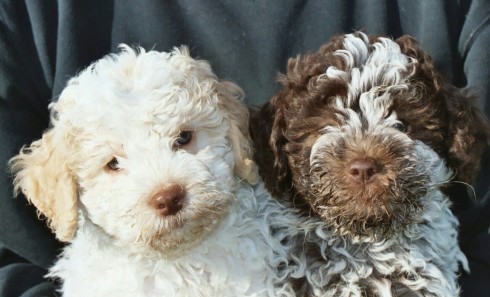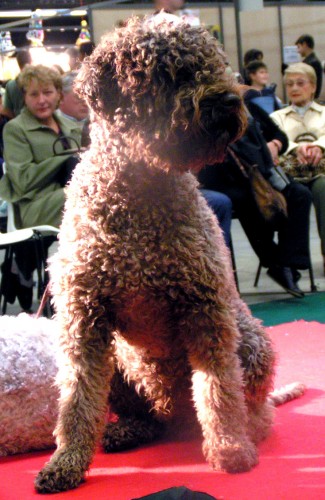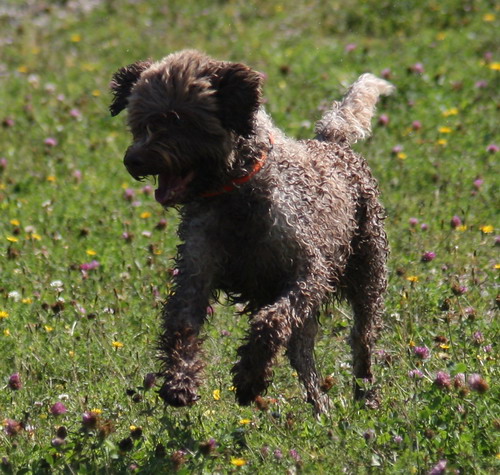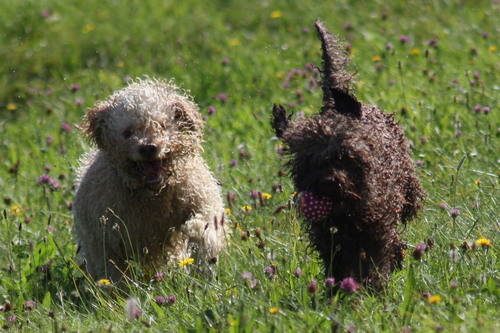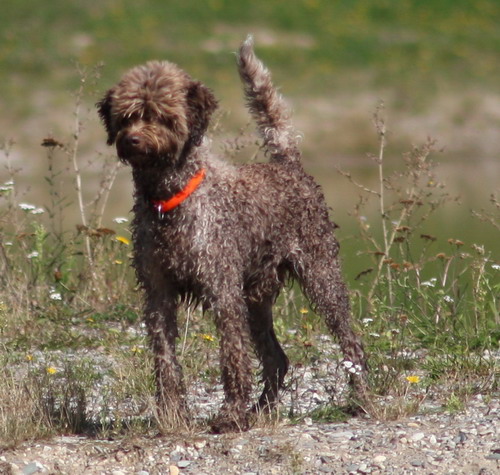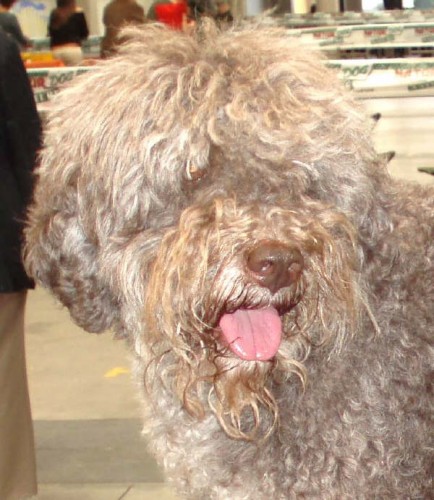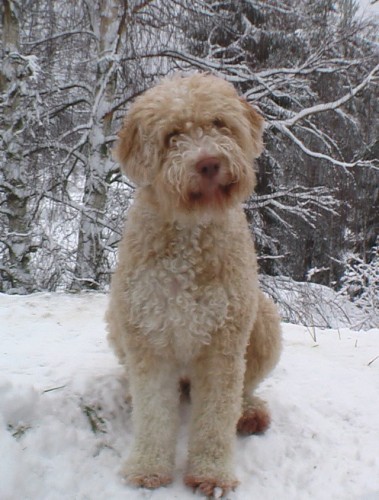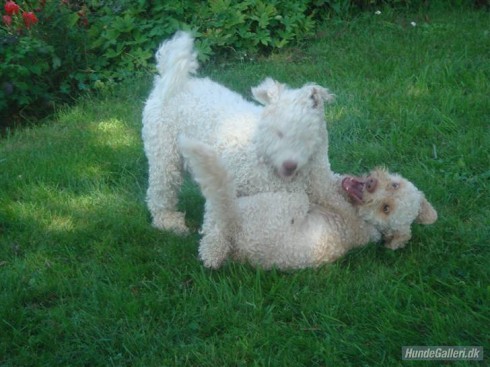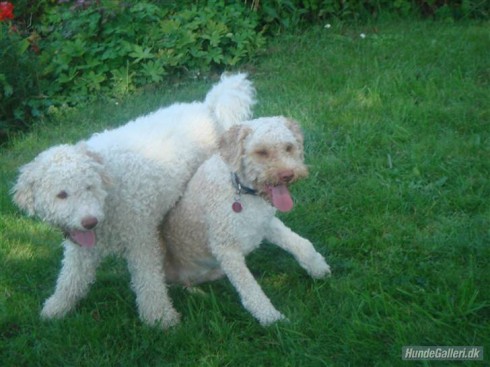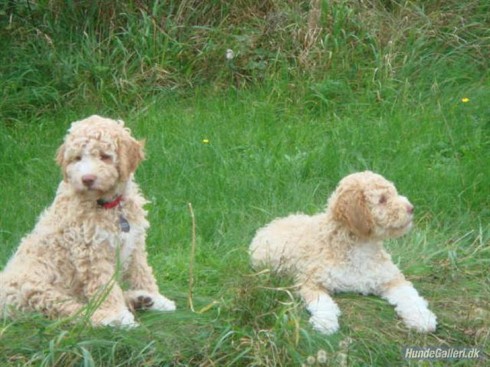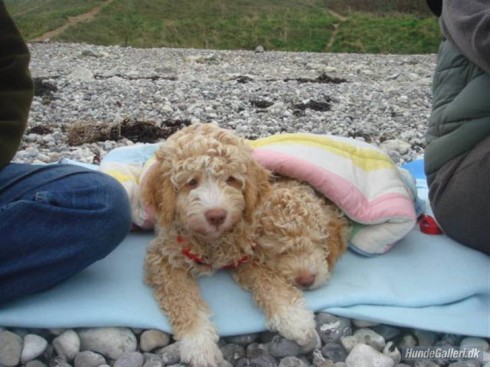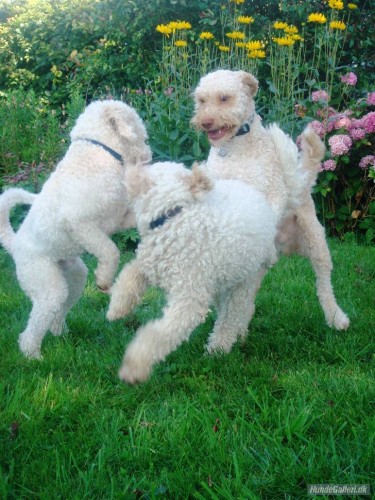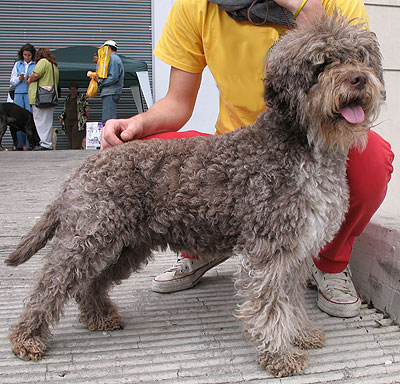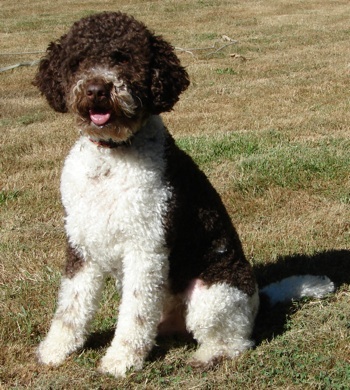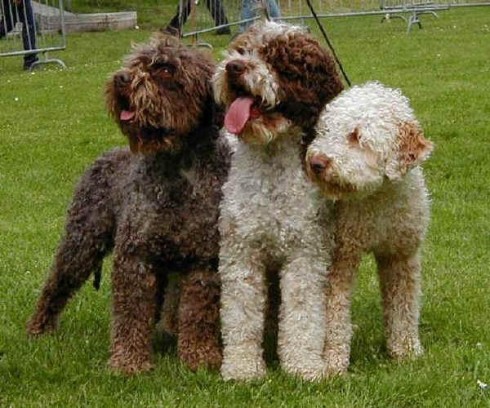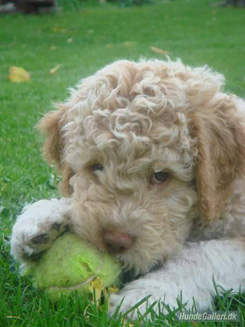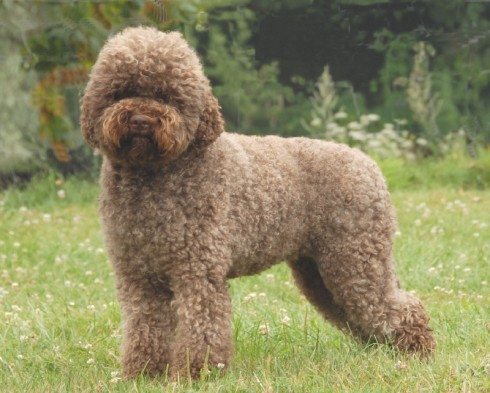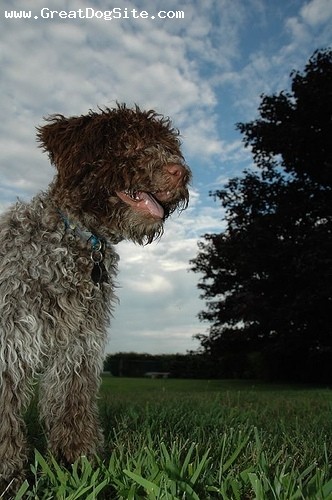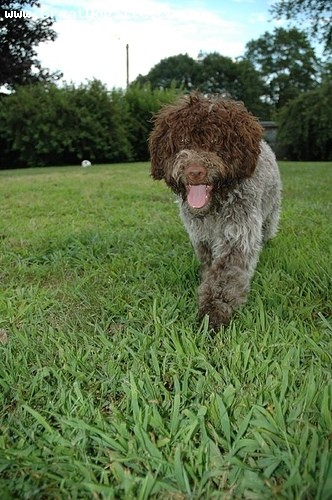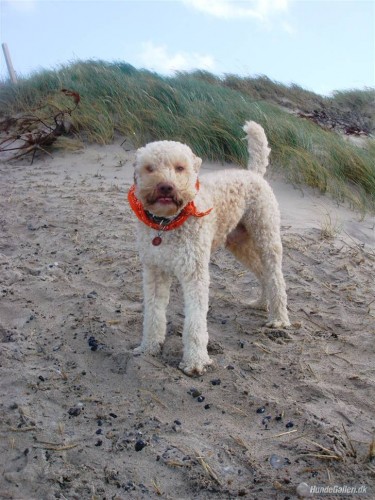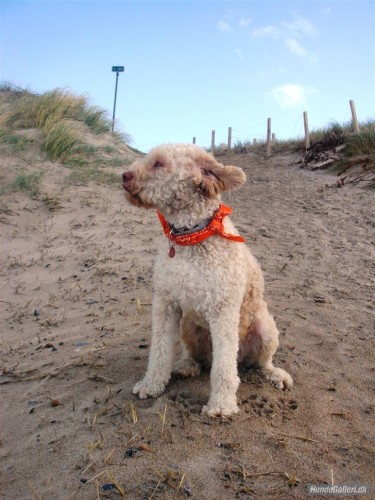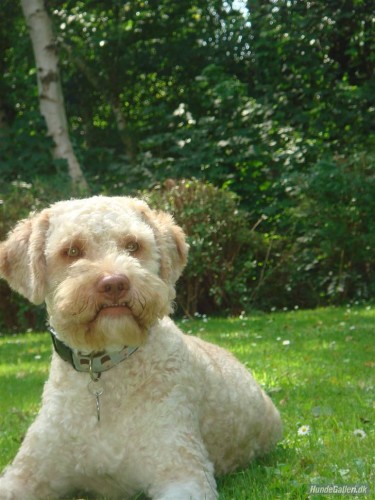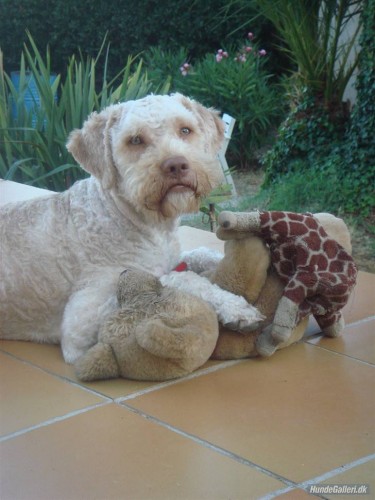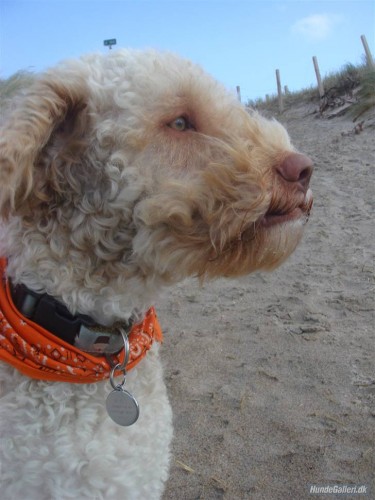Main Index
In Store
Our Web Store
Miniature Schnauzer Picture Gallery
Latest Dog Blogs
- What Are The Basic Commands To Train A Dog?
- PaySafe As The Most Popular Type Of Deposit
- Everything You Need To Know About Pet Sales
- Dogs Contribute To Our Physical And Mental Well Being
- How To Choose Where To Bet On Greyhounds In 2022
- Volunteer With Animals - How To Help Dogs Around The World
- Basic Understanding Of The House Edge
- Why You Should Get A Dog
- Top 20 Popular Dog Names Around The World
- Constipation in Dogs and How to Find Solutions
Lagotto Romagnolo
Lagotto Romagnolo Picture Gallery
Lagotto Romagnolo Clubs/Associations
The Full Lagotto Romagnolo Description
Indicative Breed Standard
General Appearance
Squarely built, small to medium sized dog of rustic appearance; sturdy and robust with dense, curly coat of woolly texture. Measurement from ground to elbow greater than from elbow to withers. Noticeable difference between sexes.
Characteristics
Ancient Italian breed of duck retriever, also used as a truffle hunter. Excellent watch dog and family companion.
Temperament
Lively, intelligent, affectionate.
Head and Skull
Head moderately broad. When viewed from above the widest point is at the zygomatic arch. When viewed from the side, planes of muzzle and skull diverge slightly. Skull slightly convex, as wide as it is long and flattening at occiput. Length of skull from occiput to stop slightly longer than from stop to nose. Slight but evident stop. Well developed eyebrow arches. Muzzle strong, depth almost equal to length. Nasal bridge straight, with large nose protruding slightly with wide, open nostrils. Jaws wide, large and powerful. Lips tight forming a wide semi-circle when viewed from the front, covered with long, bristly whiskers.
Eyes
Fairly large, nearly round, not too close together. Close fitting eyelids with rims in various shades of brown. Well developed eyelashes. Eye colour ranges from ochre to dark hazel and brown, depending on coat colour. Attentive, intelligent expression.
Ears
Moderately large, triangular with slightly rounded tips, rather wide at the base and set slightly above the level of the eye. Hanging at rest, slightly raised when alert.
Mouth
Well developed teeth, set square to the jaws. Scissor or pincer bite. Complete dentition highly desirable. Reverse scissor bite permissible.
Neck
Relatively short, oval in section, slightly arched, muscular and powerful. Without dewlap.
Forequarters
Shoulders muscular, moderately well laid back, long in blade and equal in length to upper arm. Elbows large and close fitting. Forearms straight with sturdy, oval bone. Wrist follows vertical line of forearm and is finer boned, robust and mobile. Pasterns sloping, elastic and slender compared to forearm.
Body
Compact and strong. Length from point of shoulder to point of buttock equal to height at the withers, which are set high. Topline falls slightly from withers to croup. Muscular back, loin short, wide, very powerful and slightly arched. Long, wide and slightly sloping, muscular croup. Well developed chest reaches down to the elbows. Chest rather narrow in front, broadening behind the elbows. Slight tuck up. Skin thin, close fitting and without wrinkles.
Hindquarters
Powerful upper thigh long with well developed musculature. Good bend of stifle; lower thigh longer than upper. Large hocks. Rear pasterns thin and upright. Angulation slightly greater than in forequarters but without exaggeration.
Feet
Compact with strong, curved nails. Webbing between toes highly desirable. Front feet almost round, toes tight and well arched, turning neither in nor out. Hind feet slightly more oval shaped and toes less arched.
Tail
Set on as a continuation of slightly sloping croup, tapering towards the end, just reaching the hock. Hangs in a scimitar position at rest and is markedly raised when alert. When working or excited may be carried over the back but never curled.
Gait/Movement
Free, smooth and tireless with plenty of drive.
Coat
Woolly and waterproof, rather rough on the surface forming very thick, ring shaped curls, with visible, waterproof undercoat. Curls evenly distributed all over the body except on the head where the curls are less tight, forming well-furnished eyebrows, whiskers and beard. Cheeks covered with thick hair. On the ears, curls tend to be open but very wavy. The inner ear flap is covered with hair. Tail covered with woolly, bristly hair. The coat should evenly follow the line of the dog. It may be longer on the head but must not obscure the eyes.
Colour
Solid off-white; white with brown or orange markings; brown roan; solid brown (in different shades); solid orange. Brown or dark brown mask acceptable. Pigmentation ranges from light to very dark brown.
Size
Height: males 43-48 cms (17-19 ins), ideal height 46 cms (18 ins). Females 41-46 cms (16-18 ins), ideal height 43 cms (17 ins). More than 1 cm above these heights highly undesirable.
Weight: males 13-16 kgs (28½ - 35 lbs); females 11-14 kgs (24-31 lbs).
About Our Article Directory
- Article
- 27 November 2010
- 2 comments
Canis lupus familiaris
- Breed Article
- 29 May 2010
- No comments
Quick Search
Donate
Latest Dog Pods
- Tips on How to Stop Your Dog from Biting
- Beware - Not All Advertised Dog Rescues Really Are! How Can You Know The Truth?
- Helpful Tips For Dog Obedience Problems
- How to Keep Dogs From Eating Poop
- Dog Grooming Tips - A General Overview of the Very Basics of Dog Grooming
- Recognising Different Types of Dog Obedience Problems
- 5 Important Tips On Feeding A Puppy


